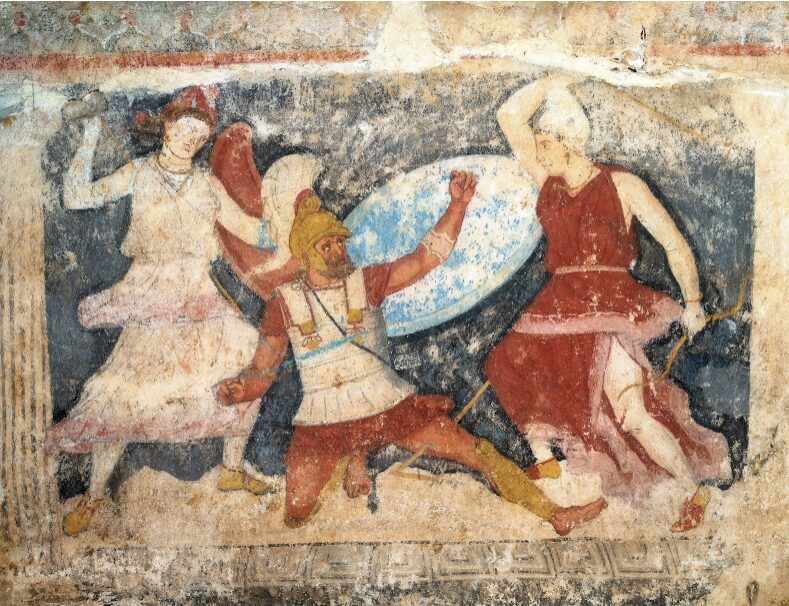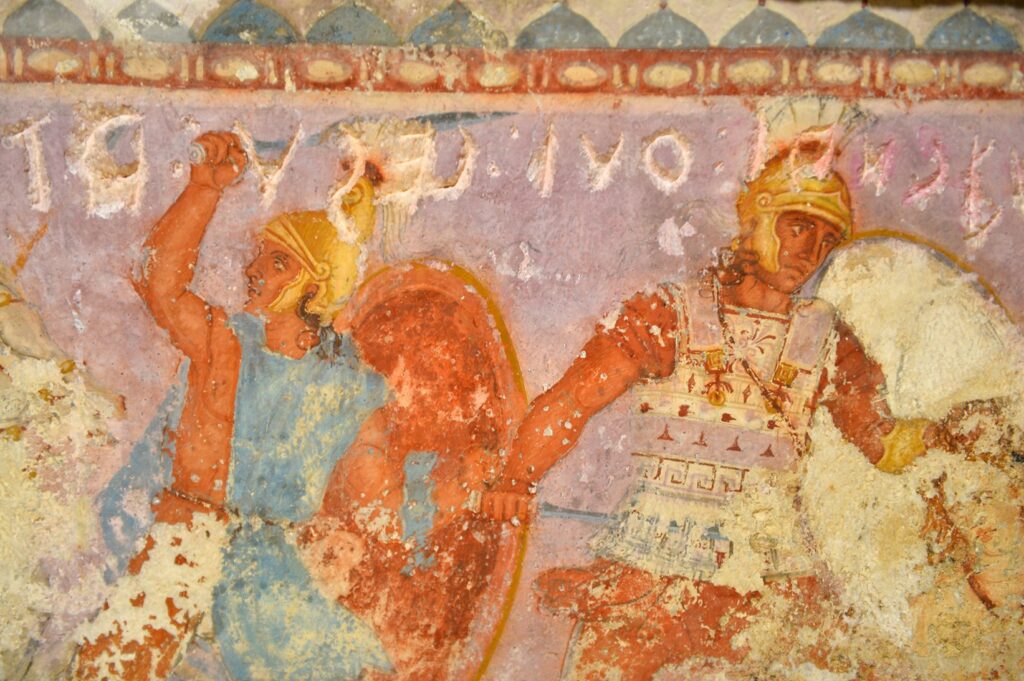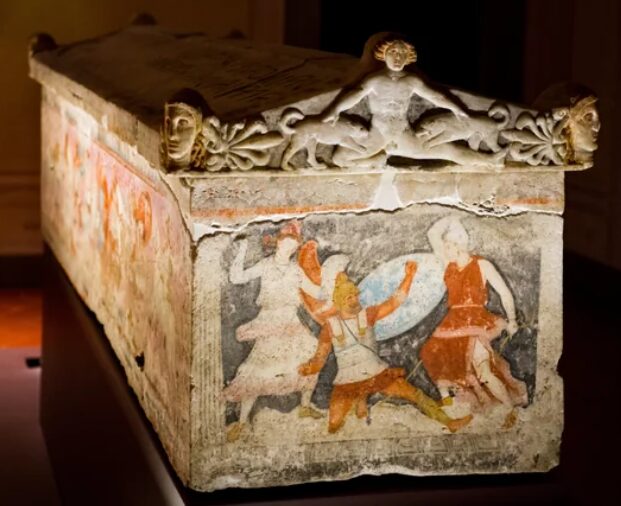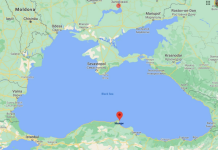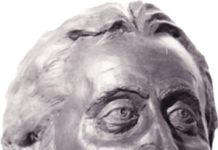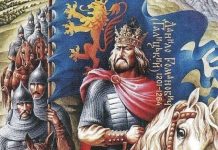The sarcophagus, painted with various scenes of an Amazonomachia, was discovered in 1869 in a grave at a little distance from Corneto, a city in central Italy not far from Lazio. In 1922, it was renamed after the ancient cityof Tarquinii (Roman) or Tarch(u)na (Etruscan). The city was later awarded UNESCO World Heritage status for its ancient Etruscan tombs and necropoli. The “Amazon Sarcophagus” dating to circa 350 B.C., is a painted alabaster sarcophagus depicting various battles between the ancient Greeks and the Amazons. It is believed to belong to the Etruscan culture as well and is currently in the De Feis Etruscan Archaeological Museum in Italy.
In 1883, British art critic Sidney Colvin published his analysis ‘Paintings on the Amazon Sarcophagus of Corneto‘ which is quoted even nowadays. The sarcophagus, in Colvin’s opinion, is the best example of the manner of polychrome painting of that age. It measures 1.94m in length by 0.62m wide. “The lid, of ordinary Italian marble, is roof-shaped, and on one of its slopes appears the inscription, incised in Etruscan characters, Ramtha Hucznai Thmi. Ati Nacnva Larthial. Apaiatras Zil Eteraias. Prof. Corssen expressed the opinion that these three groups of names denote respectively the deceased person, the lady who ordered the monument, and the artist who supplied it. The lid is moreover decorated with a colored relief of Actaeon devoured by dogs in the pedimental space at either end and with projecting female heads at the four angles: these ornaments are in the ordinary formal Etruscan style”.
“In the flesh-tints the differences of the sexes is strongly marked, as if with some reminiscence of the conventional practice of Etruscan and other primitive schools in this respect; the flesh of the fighting Greeks being a tawny red, while that of the Amazons is very fair
Hair and eyes are for the most part a purplish brown; garments mainly reddish brown, whitish grey or pale lilac, and light blue.
Horses are uniformly a greyish white, shaded with a fuller tint of grey; their eyes are always blue.
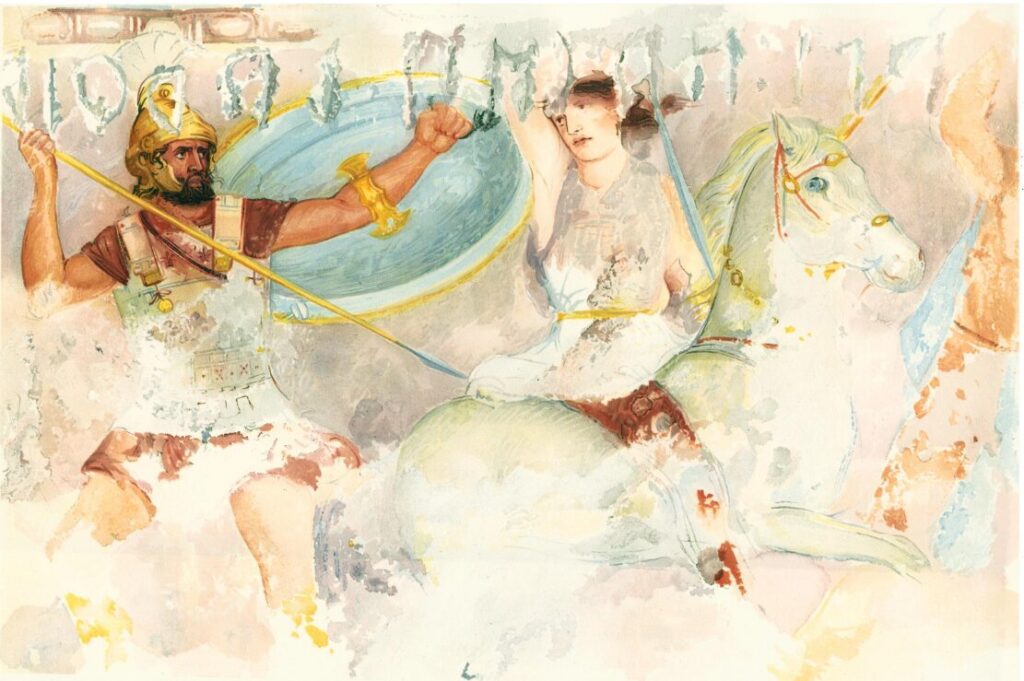
The central scene on the long side of the sarcophagus, “represents an Amazon between two Greeks. She is mounted on a white horse, and gallops away to the right, turning round in her seat to deliver a sword-cut with the right arm, which is raised and doubled right over her head, at the Greek warrior behind her, whose right arm threatens her with his spear, while he extends his shield with his left. The second Greek warrior, in front of the Amazon to our right (he is only partly seen in our picture), retreats from between the forelegs of her charger, at whom he at the same time aims a downward blow with his spear…
Every reader will be struck by the beauty and spirit of the Amazon, alike in her action and her facial expression. The type of head, broad, bold, and powerful, and at the same time young and blooming, with the pathetic-indignant expression… The dress of the Amazon consists of the short tunic, girdled at the waist, which is also the same as these heroines habitually wear in Greek sculpture of the fifth and fourth centuries, and of plain reddish anaxyrides, or tight-fitting trousers, another garment which in the sculptures of that age sometimes occurs and is sometimes missing…
The painting of the second scene was ruined, but enough remained to show that the falling Amazon was represented nude. According to Sidney Colvin, it was a peculiarity that never occurred in a pure Greek version of the scene.
In the third scene, “the Amazon is distinguished by wearing, in addition to the short tunic, a Phrygian cap, a flying leopard’s skin, anaxyrides, and boots (endromides)”.
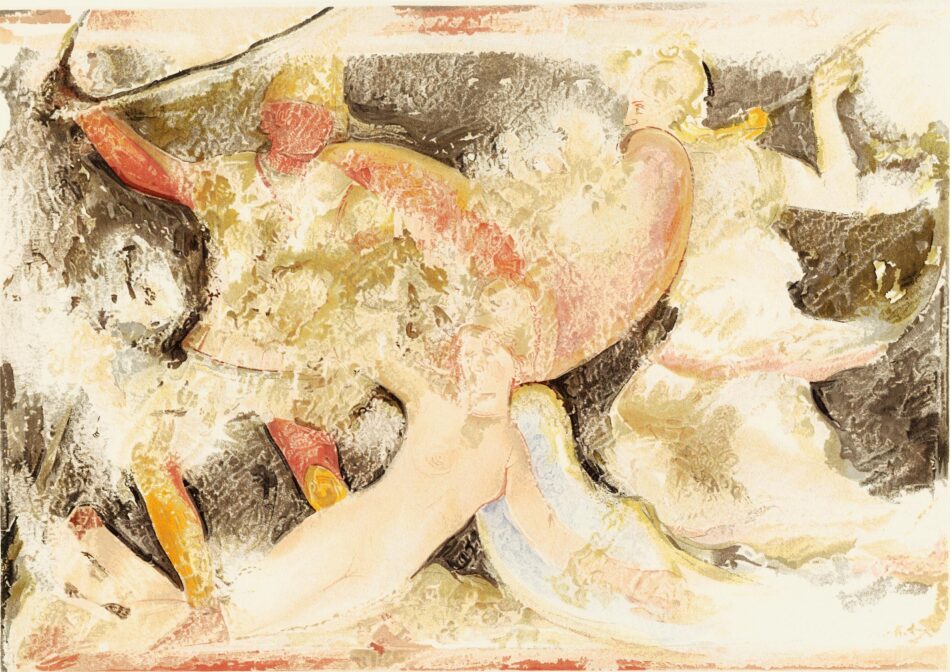
Another long side of the sarcophagus has two scenes. In each of them, “two Amazons mounted on a quadriga drive at full gallop against two Greeks confronting them, of whom the foremost is overthrown while the latter stands firm… The quadriga or four-horse chariot was ordinarily a vehicle for processions, solemnities, or races. Gods, especially Zeus, may use them in battle (cf. Eur. Herc. Fur. 177), but the mere chariots of mortal heroes are two-horsed. Sculpture shows no examples of Amazons fighting from chariots at all. Painting does show such examples, but rarely”.
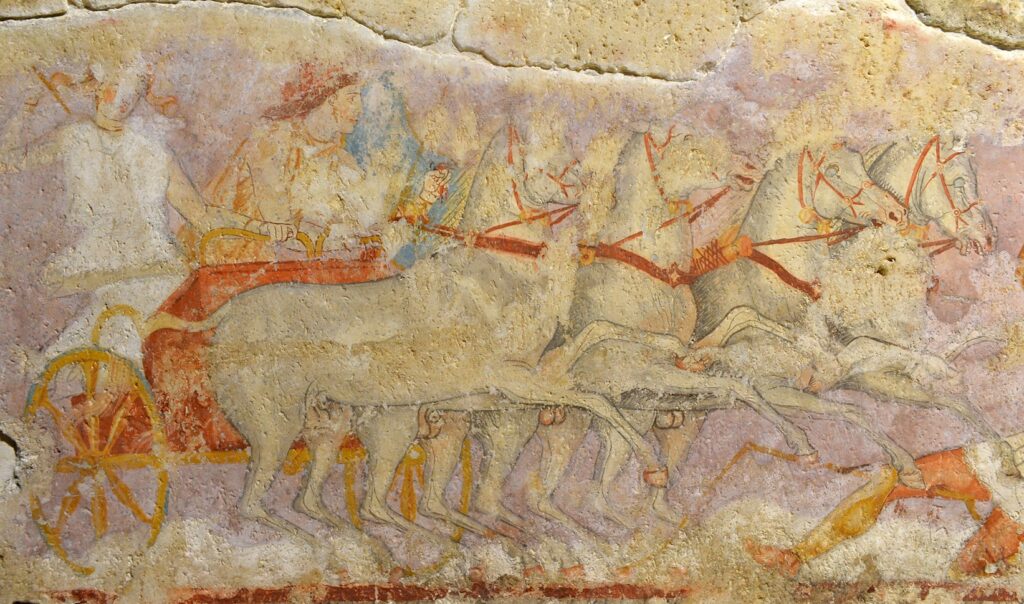
“All the horses in the present work are of the same white color, similarly shaded with grey, and have the same blue eyes: even superior to this one [horse in first scene] in fire of action and expression are those of the two quadrigae in groups on the opposite face. All are caparisoned with some richness: see, in the present instance, the scarlet reins and headstall, and the gold cable-chain and links.”
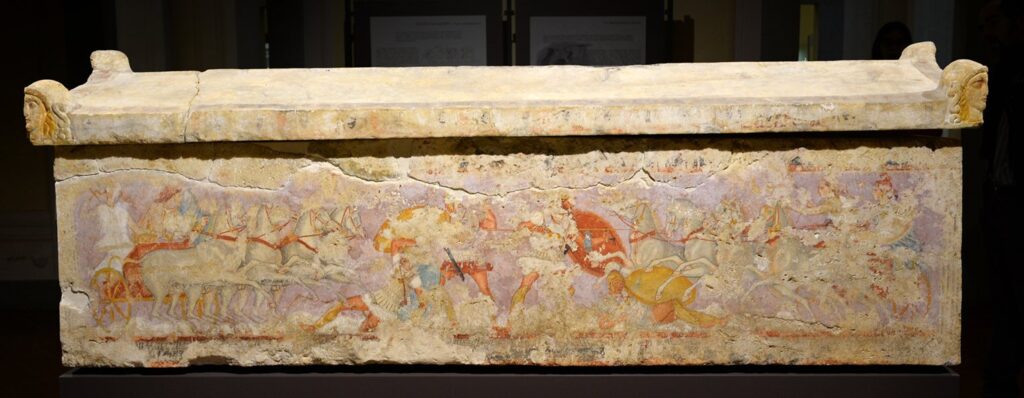
It is interesting that among the nearest parallels to the Amazon sarcophagus just described, Sidney Colvin names a painted wooden sarcophagus found near Kerch in Crimea – “chariots similarly drawn by four white horses occur in a work closely analogous to this, and probably of about the same date, viz. the fragments of the painted wooden sarcophagus of Kertch representing the Rape of the Leucippidae”.
How did the Amazon movement start and what did the name Amazon originally mean? The “Royal Scythia, Greece, Kyiv Rus” book has the answers to the questions.
Were there the Amazons in the territory of present-day Ukraine? >
